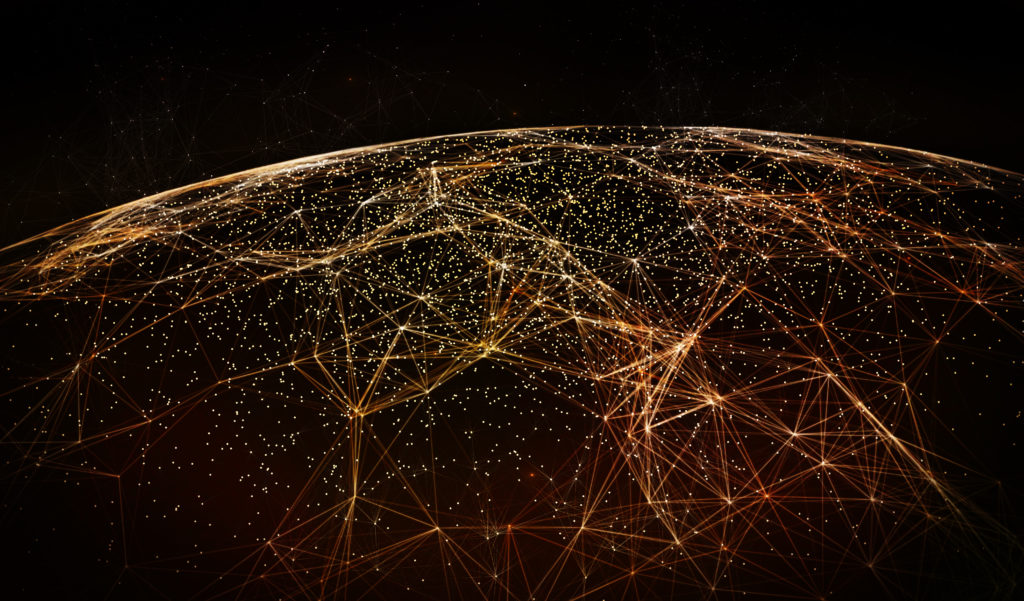The Future Of Global Businesses

If your company has a global footprint, you know how complicated and time-consuming it is getting to track changing global regulations, tax laws, and compliance rules.
In 2013, for example, the average time that a company spent to comply with Brazil’s tax laws was 2,600 hours – well over a full FTE year of work. This was revealed by a comparative study conducted by PwC and The World Bank of tax systems across 189 economies worldwide. Brazil has in recent years rolled out a massive tax reform and Simplify Tax System initiative, which includes a centralized electronic services facility, according to The World Bank. This change creates challenges for the companies that must adapt to the changed system, and is typical of many other governments that are going digital. Indeed, these changes, which are intended to simplify tax systems, are adding a new layer of complexity, at least in the near term.
The early days of globalization: National Language Support (NLS)
In the late 20th and early 21st centuries, the information revolution paved the way to globalization, as businesses shifted from being logistically and economically bound to local supply chains and markets, to having access to global ones. Globalization affected transport and communications, shifting the major challenge that international businesses face to that of adapting their products, services, internal operations, and external relationships beyond their home markets, and to source from global supply chains.
During the early days of globalization, “going international” was treated primarily as a language translation problem, hence the label “national language support,” or NLS. For many companies, even today, localization is synonymous with NLS.
With its focus on making the use of different languages frictionless, NLS was dedicated to defining how an activity stream could be centrally managed and yet support users in multiple languages. Software, for example, was rearchitected to include language translation tables so that a single code stream could render text in any language.
NLS fostered agility by decoupling the dependencies between the core implementation of a product or activity, and each language variant. If a change was made to the language-independent product core, it would automatically propagate to each language variant. Then, if support for a new foreign language was needed, this could be done entirely by an in-market localization team.
But language adaptations are only the beginning. To understand the bigger picture, we need to move to the opposite side of the localization coin – globalization.
The relationship between globalization and localization
While globalization and localization are often used interchangeably, they are not the same.
Globalization is strategic – articulating goals for a business and choosing how to achieve them with activities in different countries.
Localization is tactical. Once a set of geographic locations and associated business activities has been selected, the technical and organizational capability must be developed to operate efficiently in the chosen localities, and to integrate these operations globally. The scope of localization goes well beyond incorporating the local language and customs into a company’s products. Localization in its fullest sense requires adopting the legal system, tax collection process, and regulatory compliance burdens of organizations local to the region.
So now, instead of asking, “How do we make this product operate in multiple cultures and locations?” the broader question is: “How do we adapt this business function so we can apply it in all of our markets with minimal complexity, effort, and duplication?” The key, as with language versions, is to create general-purpose taxation systems and processes – both human and automated – with country-specific plugins. This is the pattern that was used in NLS but can be taken beyond language to new domains.
The abstract interface pattern
Localization implements an important pattern in systems engineering – wrapping a single abstract interface around many different systems, each of which implements the abstract characteristics of the interface in some way. This provides simple and consistent access to sophisticated functionality.
For example, companies such as Orbitz and Expedia sell travel solutions that bundle together products from many vendors, including airlines, hotels, and car rental companies. To simplify the customer experience, Orbitz and Expedia hide the complexities of the underlying systems.
Note that such interfaces have existed long before the Internet was invented. Whenever a supplier of services employs systems that its customers cannot use directly, a layer of specialist businesses mediates between the supplier and the customer to fill the void. These businesses act as a go-between from the supplier’s complex fulfillment systems to the customer. Prior to Expedia, this service was provided by human travel agents.
For tax and compliance, most of the work required to meet local requirements is still handled by human experts, just as travel agents once handled each of the proprietary booking systems on behalf of travelers. In these examples, the implementation of each workflow step must take into account a variety of complicated rules, conditions, and restrictions. These could include airline fare rules and national visa requirements on a travel site or tax laws on a site for filing taxes. By simplifying the customer experience, this pattern has increased productivity enormously in many arenas. It applies to many of the tax compliance calculations, and related use cases faced by many companies today.
Designing localization solutions as interface architecture creates a second major source for efficiency gains. The rules for each tax jurisdiction are the same for all filers, just as airfare rules and hotel room booking conditions are the same for all travelers. The particular rule base for each supported jurisdiction need only be implemented once by a centralized service provider, who can then spread the cost of this over all users who subscribe to that service.
A platform solution for the future of global business
In the business world, company demand is increasing for a new, trustworthy source of information on tax and regulatory changes worldwide, to drive strategic global decisions as well as tactical local ones.
The solution lies in developing a platform to help businesses interact with multiple taxation and regulatory bodies that provides, a unified, constantly updated source of the information. The platform needs to be designed in response to several trends:
Compliance: Governments, previously reluctant players in the digital transformation game, are catching up rapidly. New operational expenditure purchasing patterns, a focus on transparency, and an increasingly open stance toward innovation and the cloud are shifting the taxation and compliance landscape.
Complexity: Organizations are increasingly challenged to keep track of rapidly changing regulatory and tax requirements in many countries.
Customer experience: This is becoming the driving factor for technology selection.
Co-creation: Organizations are working ever more closely with their partners to co-create new services.
High flexibility, fast adaptation: Rules change frequently, so companies require a solution that keeps them up to date.
Interoperability: This new architecture overcomes historical problems like lack of interoperability between systems that handle tax calculations, tax reporting, cash flow statements, payments, and tax returns.
Moving to API-based platform systems
A platform that responds to the needs described above has to expose application programming interface (API) components to an ecosystem of developer partners. The main idea, as shown in Figure 1, is that instead of delivering monolithic applications, with their components used only within each application, we now expose the building blocks used to construct applications to a partner ecosystem.
The API is the usability interface for programmers; it allows coders to create new software as “mashups” of functionality developed by other coders, perhaps at other companies.
For example, APIs are provided by:
- Facebook to obtain a list of a person’s friends
- Salesforce.com to allow a program to access sales contacts
- LinkedIn to provide contact information
- Google Maps to deliver maps
Called “recombinant innovation” by the authors of The Second Machine Age, this pattern of a company offering building blocks instead of monolithic applications is increasingly widespread and essential today. For instance, this approach is widely believed to be the reason that Facebook ultimately beat MySpace as a social network. (Also read “Be the Platform, not the Product,” by Bernd Leukert, member of the SAP Executive Board, in Medium.)
A globalization example: A company may wish to write an app that calculates taxes for just a single jurisdiction every few months. To do that, purchasing a full taxation application is overkill and introduces unnecessary costs and risks. Instead, the company’s programmers can invoke a tax calculator API over the Internet, using a mechanism similar to the familiar http://www.xxx.xxx protocol used to access a Web page. However, unlike a Web page request, the API request doesn’t return pages that display in your browser; instead, it returns data in an easy-to-use format – in our case, a tax calculation.
Looking forward
Such a platform should offer substantial capabilities such as machine learning, which, when combined with a platform delivered tax management service using design thinking, could help CFOs and tax directors plan, forecast, estimate, and simulate the impact of business decisions. Machine learning supports learning the cause-and-effect links between factors such as product and marketing decisions and assumptions, and their impact on sales revenues and tax causes. The design thinking methodology ensures that all systems are built with the user in mind to minimize the friction between users’ natural way of thinking and how the computer supports their work.
This advanced technology could help detect and fix incorrect tax calculations before a tax audit, thus saving companies millions of dollars in tax penalties.
We need to consider the forces driving the creation of a globalization platform, as well as the widely used interface architecture pattern that it adopts, so as to supercharge customer experience and efficiency. Such a platform will represent the next generation of software – powerful, efficient, agile software that supports a great customer experience to enable global businesses.

